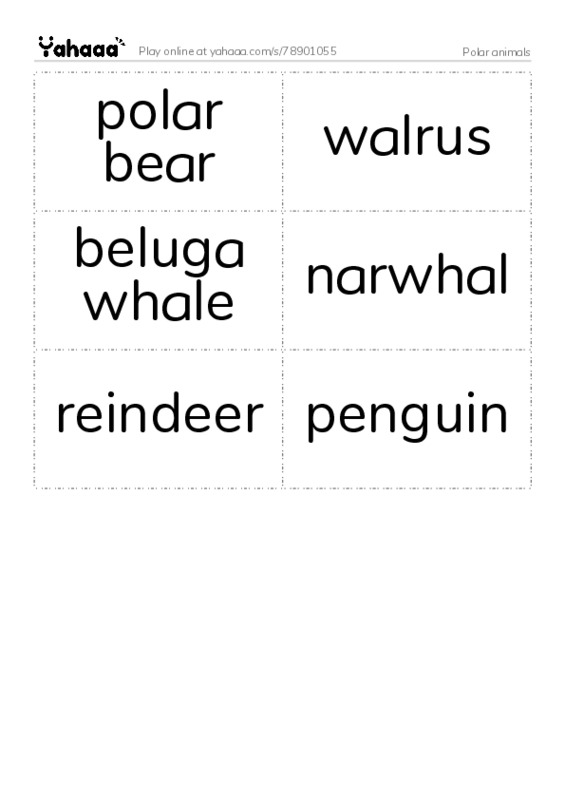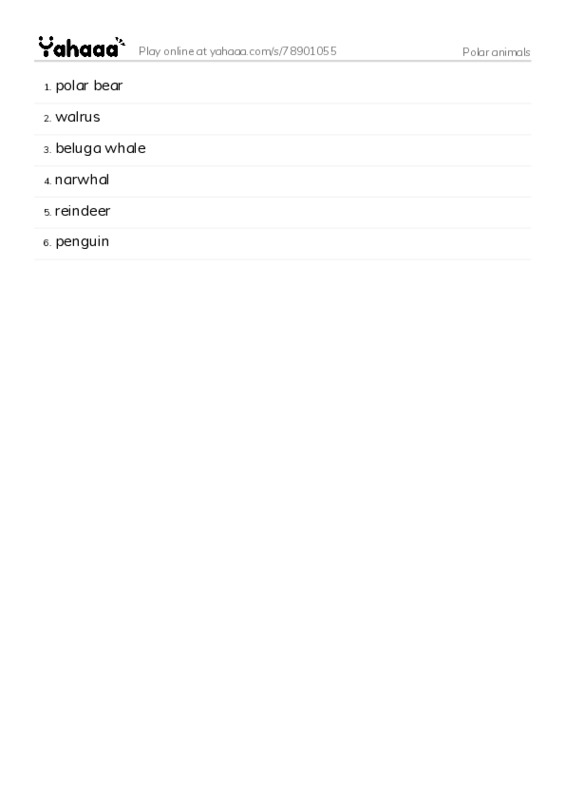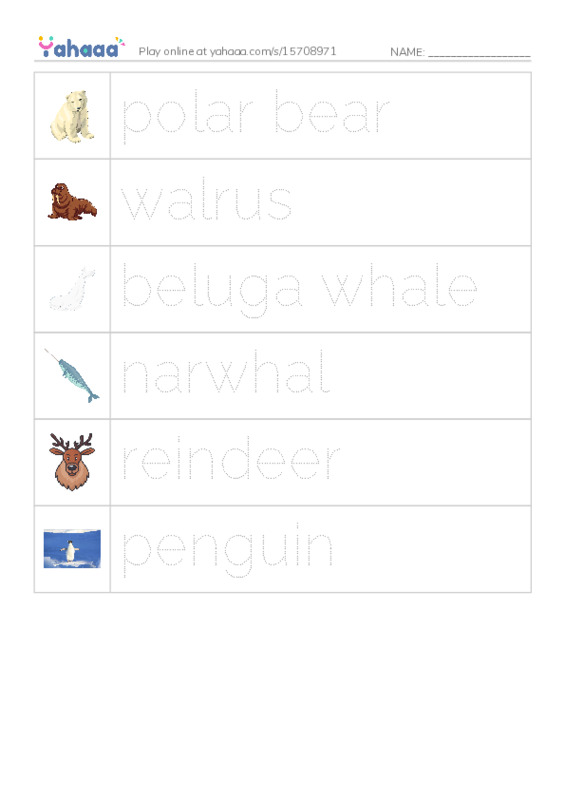The best free printable Index cards for kids to learn about polar animals!
Free printable index cards are a great tool for kids to learn about English polar animals vocabulary. These cards can be used for a variety of levels, from beginner to advanced, and provide a fun and interactive way for kids to learn new words.
One of the benefits of using index cards for vocabulary learning is that they are easy to make and can be customized to suit the needs of each individual student. For example, a beginner student may only need cards with the basic words for polar animals, such as "penguin" and "polar bear", while a more advanced student may benefit from cards with more complex words, such as "leopard seal" and "narwhal".
Another advantage of using index cards is that they provide a hands-on way for kids to learn new words. By physically holding the cards and flipping through them, students can actively engage with the material and better retain the information. Index cards can also be used for games and activities, such as memory matching or flashcards, to make vocabulary learning even more interactive and enjoyable.
In addition to being useful for vocabulary learning, free printable index cards can also be a cost-effective and eco-friendly option for teachers and parents. Instead of buying pre-made flashcards, which can be expensive and may not include the exact words that are needed, printable index cards can be easily downloaded and printed at home, saving money and reducing waste.
Overall, free printable index cards are a valuable resource for kids to learn English polar animals vocabulary. They can be customized to suit different levels, provide a hands-on way to learn new words, and are cost-effective and eco-friendly.
Why is this a good way to teach kids/in kindergartens?
Index cards with images are particularly good for learning English polar animals vocabulary because they provide a visual representation of the words. This can be especially helpful for young learners who may not yet have the reading skills to fully understand the words on the cards. By including images of the polar animals, students can easily associate the words with the corresponding pictures, which can aid in their understanding and retention of the vocabulary.
In addition, index cards with images can make vocabulary learning more engaging and fun. Many kids are drawn to colorful and interesting visuals, and having images on the index cards can help to capture their attention and keep them interested in the material. This can make vocabulary learning more enjoyable and effective.
What makes these winter animals worth learning about?
Polar animals are interesting for a variety of reasons. For many people, these animals are exotic and fascinating because they are adapted to thrive in the harsh and unforgiving conditions of the polar regions. From thick layers of blubber to sharp claws and teeth, polar animals have evolved a variety of unique characteristics that allow them to survive in these extreme environments.
In addition to their physical adaptations, polar animals also exhibit a range of fascinating behaviors. For example, polar bears are skilled hunters that can swim for miles in the icy waters of the Arctic, while penguins are elegant swimmers that use their wings to propel themselves through the water. These and other behaviors make polar animals interesting to watch and learn about.
Furthermore, polar animals are important indicators of the health of the polar regions, which are facing significant challenges from climate change and other environmental threats. By studying polar animals, scientists can gain valuable insights into the impacts of these threats and develop strategies to protect these fragile ecosystems.








